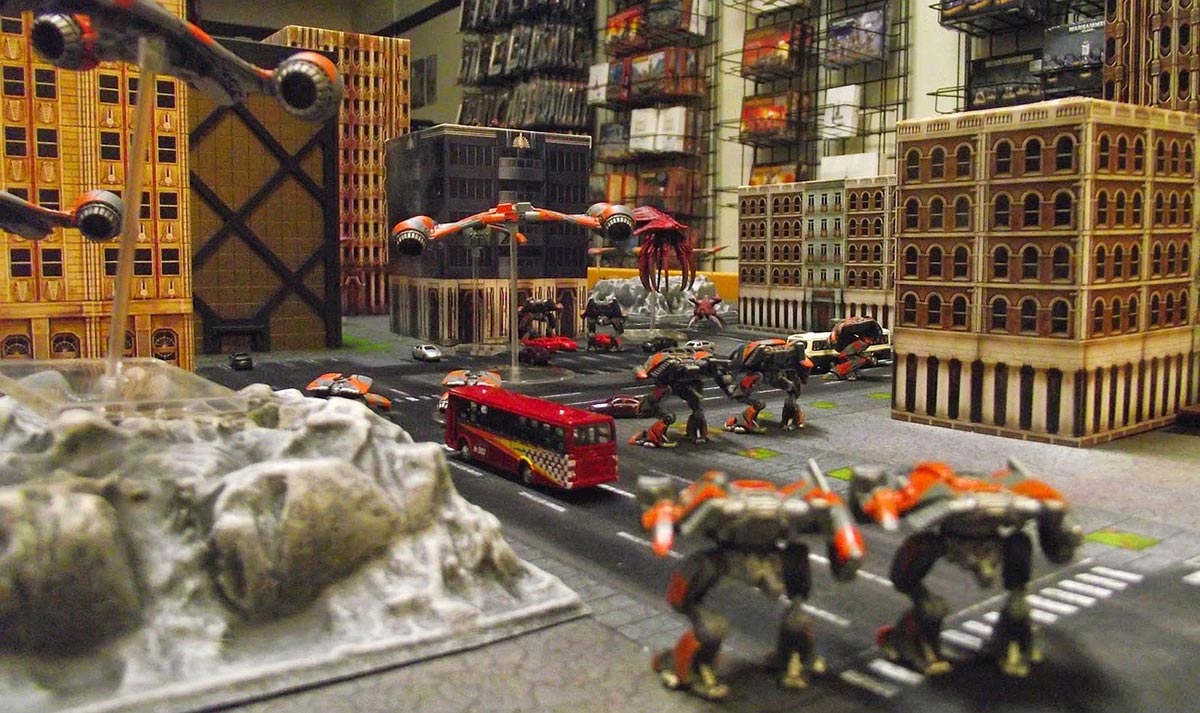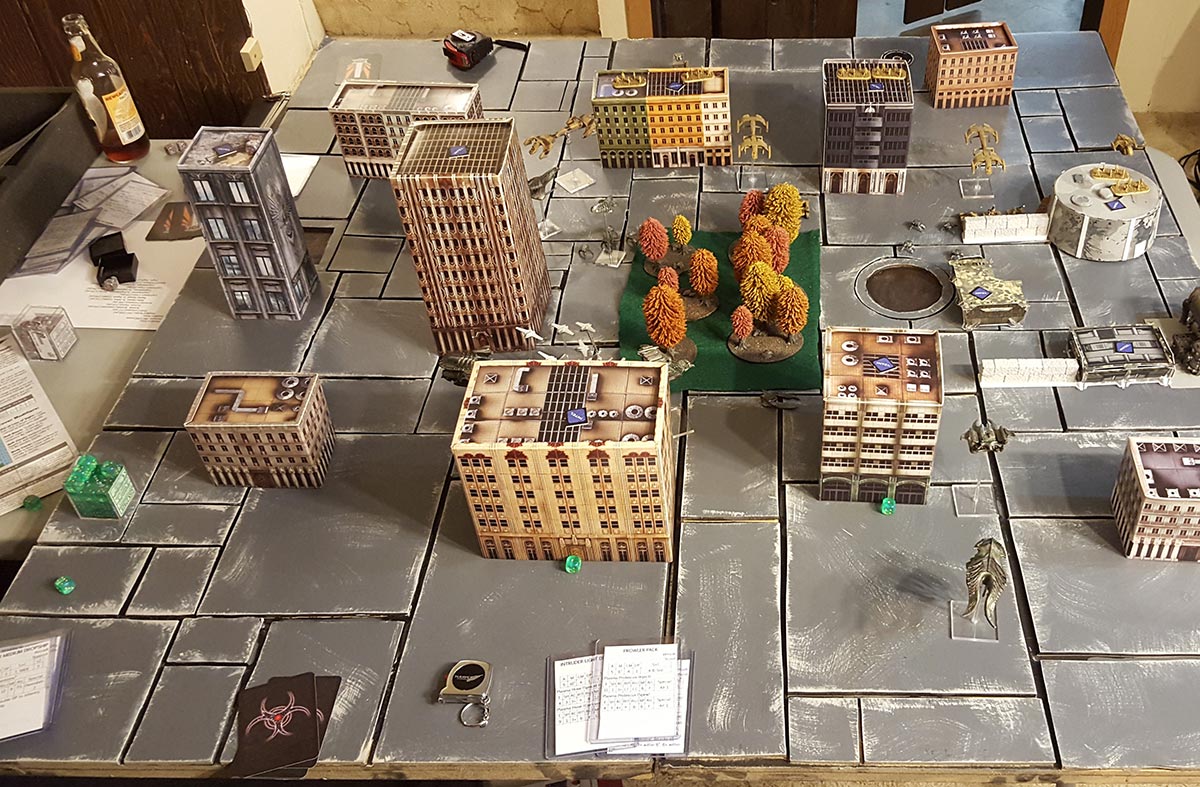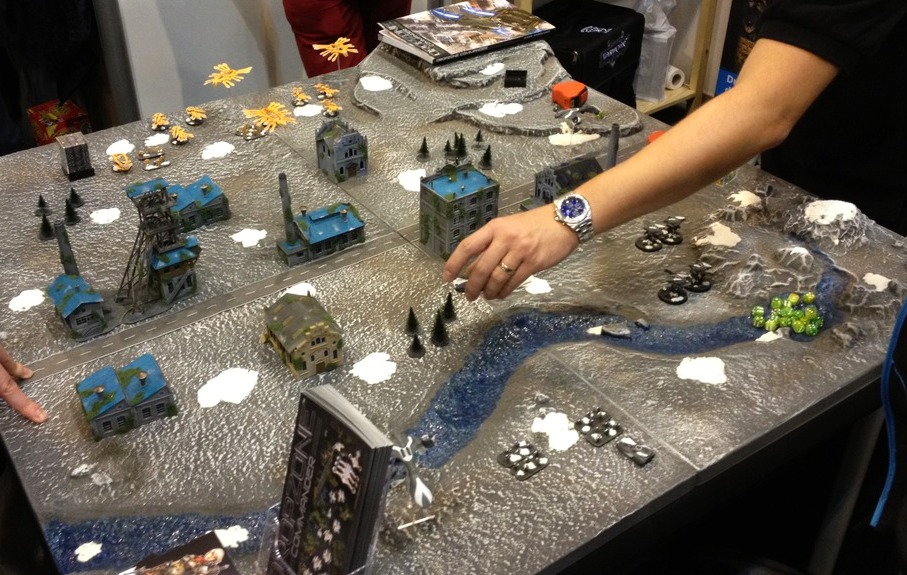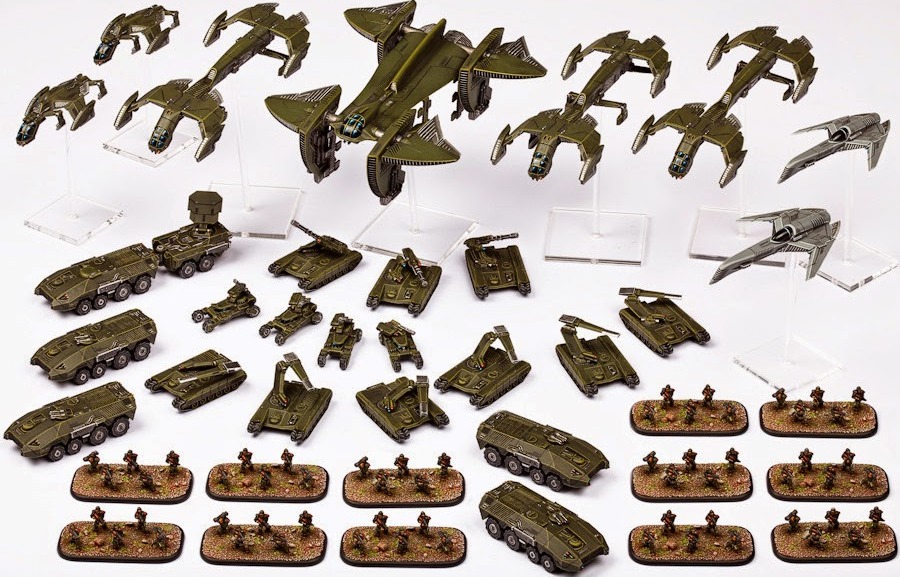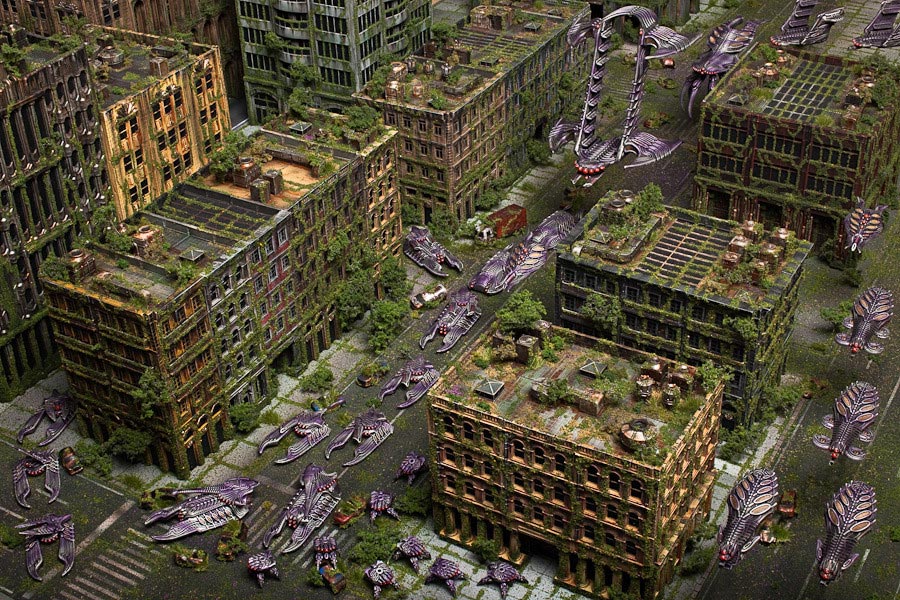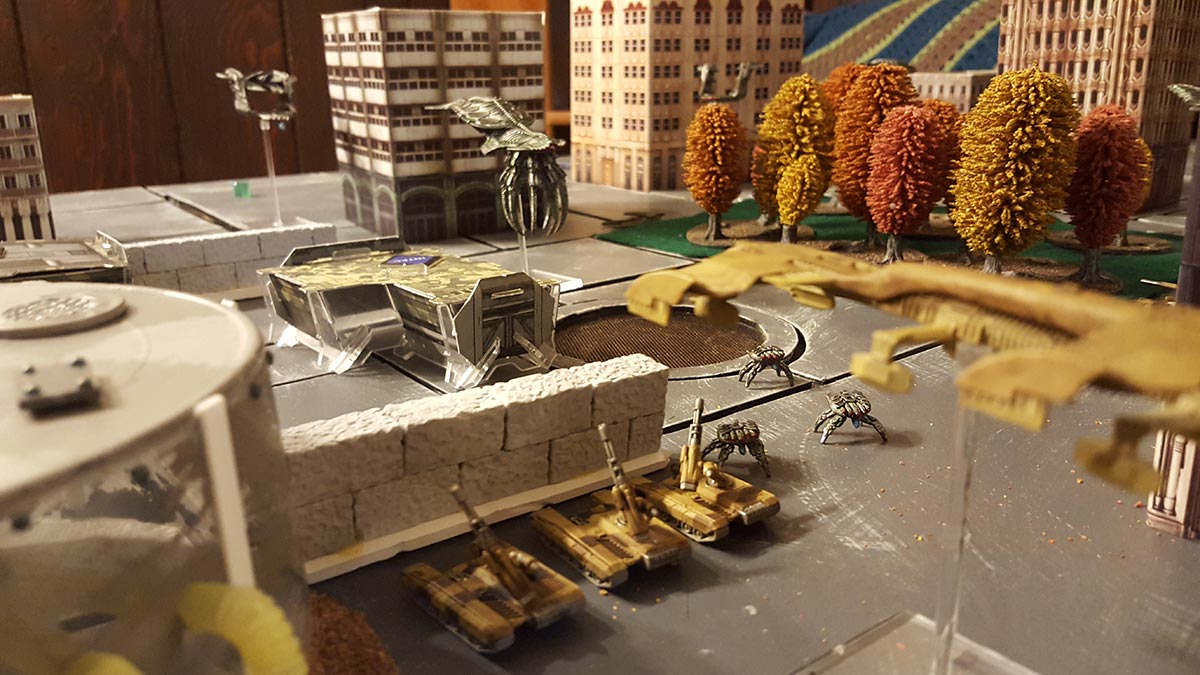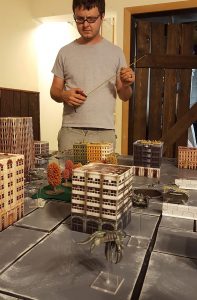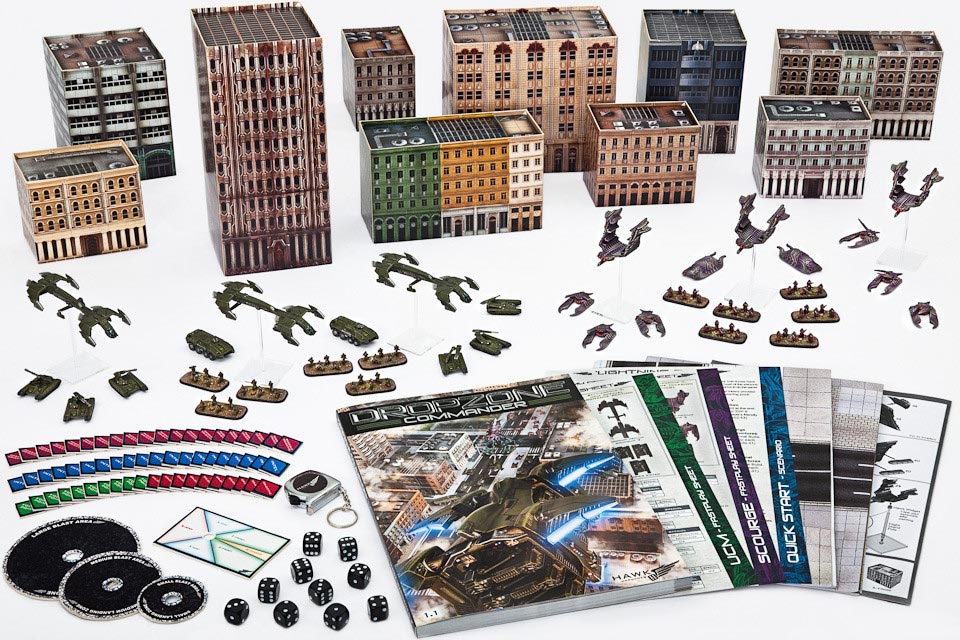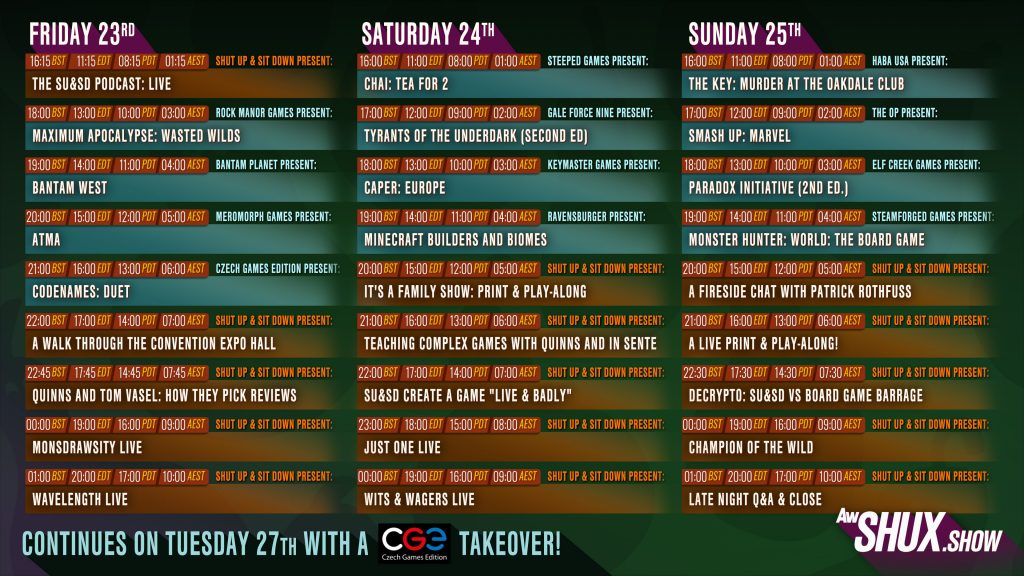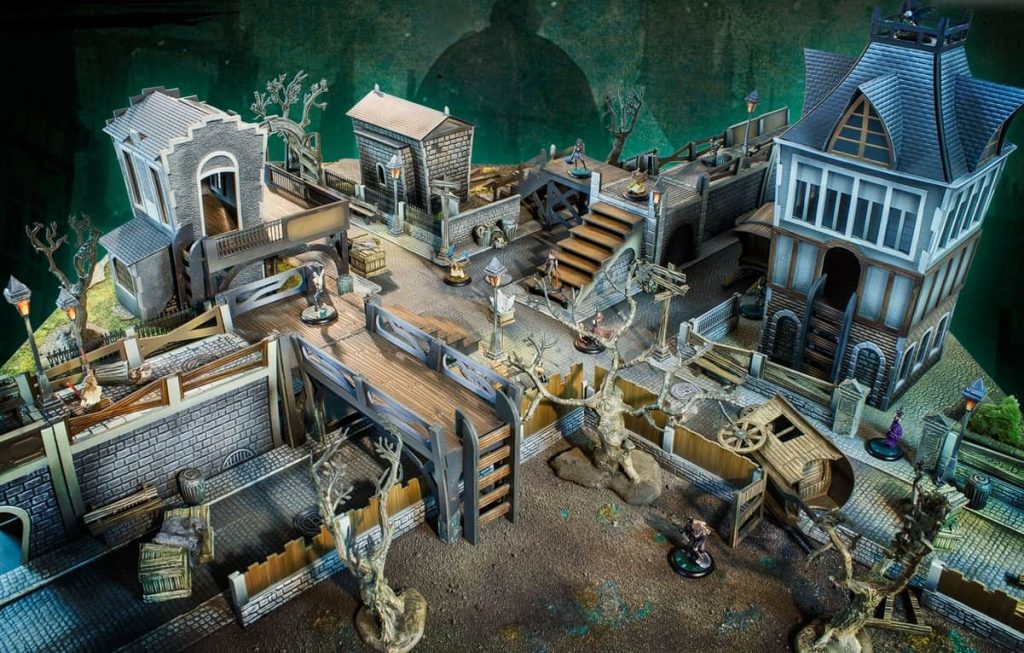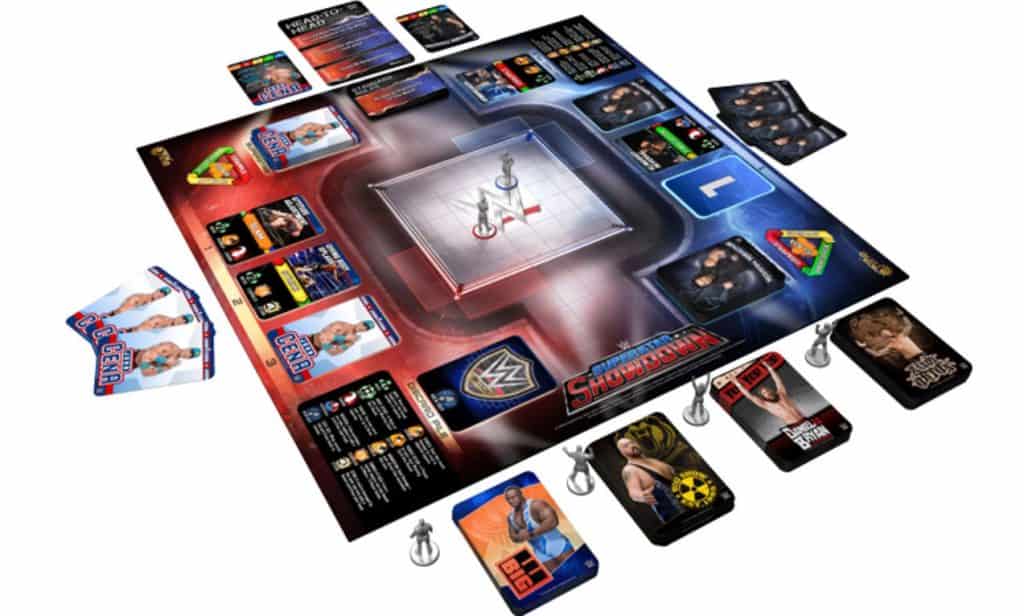Eric: If you’re like me, some days you want something small and cozy, an intimate exploration of a few characters. Other days, you want something big and brassy.
Some days, though, you just want to flatten a building with your opponent’s soldiers still inside it.
Today I’m talking about the sweeping Dropzone Commander by Hawk Wargames. DzC (as we’ll abbreviate it for time and acronyminal sexiness) is a large-scale science fiction game set in the 27th century. As you all know, in the 25th century humanity was driven from its core worlds, including Earth, by the invasion of the parasitic Scourge. Now, 160 years later, it is time to TAKE THEM BACK!
DzC is a game about combined arms – the necessity of diverse units fulfilling specialized roles. On a given turn, you will have squads of infantry searching high rises for precious objectives and engaging in running close combats through their halls. You will field tanks and walkers unleashing massive firepower into each other and those high rises, causing them to collapse. Your aircraft will zip across the whole table at supersonic speeds while blowing up said tanks and bombing high rises as well (in the 27th century you really don’t want to be a footsoldier) and your anti-air firepower will hunt down these aircraft.
And you will have dropships – lots of dropships. We’ll come back to them in a minute.
Just to rewind in case you missed it, yes, you can blow up sky scrapers in DzC. One of those pleasures I so rarely get to indulge.
Now of course, lots of games include all these elements. However, at least in my experienced, rarely do they actually reach the level of true combined arms. In most games, spamming something (usually infantry or tanks) can fix all your problems, like Worcestershire sauce in cooking.
Not so for DzC, where ignoring any one element in your army can be devastating. Indeed, I’ve found many games come down to who can get an upper hand in one part of the battle – say, for instance, hunting down all your enemy’s AA – and then exploiting that sudden weakness.
Besides this specialization, what sets DzC apart? Interestingly, it is not the core rules. Where games like Infinity might be all about innovating the basic mechanics of wargaming, DzC is not.
You will activate a battlegroup, you will use your ruler to move the pieces in it, you will shoot things by rolling some six sided dice to hit and then re-rolling them to damage. There is even a damage chart, although it’s a simple one. In other words, if you’ve ever played a popular wargame I keep having to obliquely reference in these columns, nothing here will surprise you.
Indeed, if I had a gripe with the game, it would be an upshot of this simplicity. DzC often boils things down to a roll of a single six sided die. This is great for ease of use, but the lack of granularity in probability can lead to some frustrating swings in luck. Even worse, at least for me, is the fact that the system has a few peripheral mechanics (the availability of fast fliers, finding objectives) which use these rolls in ways that introduce frustrating randomness where I’d rather have the ability to plan and predict. Luck is like curry – delicious as a seasoning, but upsetting when overused or mixes into my troop reserve tables.
(And yes, I’ve made two food analogies in three paragraphs. Excuse me while I go eat some lunch.)
Anyway, back to the question at hand – what things make DzC different than the competition?
First, it is a 10mm scale game. For those of you not yet inducted into the second arcana of miniatures, let me explain. Most of the miniatures you’ve probably seen are at a scale between 28 and 35mm. That means your typical person is about 3cm tall.
However, this is not the only scale miniatures have been made in. They can range from the basically-painted-dots 2mm to the 72mm “play doll” scale. While both these extremes are pretty rare, a variety of games have been made to the somewhat-smaller-than-normal 10-15mm scale. DzC is not unique in this regard, but it does make it somewhat unusual.
At this size, your soldiers are tiny and crammed 3-5 to a base. Tanks become the basic unit of measurement. Your armies are actual armies rather than a few squads that somehow got lost from the main force. This means that you can fight battles that feel like battles, where hundred of people die and dozens of tanks are left as smoking ruins. Or, as I somewhat questionably would think of it, good fun!
Also noteworthy is the flow of the game itself. Let’s return to those dropships as exhibit A. Lots of games have transports, where you put your little things in bigger things to move them across the board. They are usually boring. But DzC makes the daring move of taking these transports as its central conceit. Dropships are absolutely crucial to combat. They are fast, they can pick up and drop off units in the same turn, and they can (usually) fly over intervening terrain. This means that the battlefields of the 27th century are fluid, evolving things.
In many wargames, the course of the battle is set from the first turn or two. Your armies get deployed, and from then on it is an inexorable march towards inevitability. Which might be like real life, but is not like DzC. Here, you can pick up a unit on one flank, sweep across the table, and deliver it to help on the other. You can rush up a table edge and drop a key piece behind enemy lines. You can even be a jerk and deposit, say, a bunch of AA guns right in the middle of the board so that your opponent’s dropships can’t do anything meaningful (You know who you are, you jerk.) Best of all, you can do all of this in one turn.
Many miniatures games feel like boxing. Your improbably proportioned soldiers unload preposterous amounts of firepower on each other, slowly wearing one another down until one of you finally folds. DzC feels like fencing. Or, at least, how I imagine fencing to feel. All nimble and sleek, full of feints and counterfeints. You can spend the first several turns deploying and maneuvering and redeploying your troops before you truly come to grips. It is like dancing, albiet with rail guns and plasma cannons.
In addition, DzC absolutely nails unit design and balance. Most units are actually pretty simple – basic stats and perhaps a special rule or two, nothing like the novels written on cards which seem the raison d’etre of some other games. Yet they just work. The factions all feel different. Their specialized units feel appropriately special, without (usually) becoming simply niche-fillers. Everything just fits together like a well-designed machine. You can understand how its built but still admire the purring elegance of it in action.
On a less tangible level, DzC is a great game because it makes you feel competent in the area it portrays. One of the things I admire most in game design is when you come away sensing that, somehow, the skills you use in the game are the same skills you’d use in real life. Business games that make you feel like a savvy mogul or political games that leave you thinking you need a shower – I always feel a glow of admiration for such designs. And DzC nails this. As you coordinate and command your forces, you feel like a tactical genius.
Not that you are, mind you. No real commander looks at his staff and says “Don’t worry men, Hunter grav tanks only threaten 21 inches.” But you still feel like it, and that illusion of savvy generalship is a rush in all the right ways. In the same way, when you fail, you can almost always point to a strategic blunder where everything came apart.
The author, considering how best to eradicate some resistance.
Now for the practical notes. DzC is fairly expensive to buy average-sized forces for, especially if you have to acquire terrain. Thanks to the difference in scale, few shops or local players will have ready-made buildings and other features of the appropriate size, and DzC requires a lot of them. On the bright side, painting these models is actually much faster than their larger cousins, and the armies come out looking great.
The cost has caused me to historically be a bit recalcitrant to recommend DzC, but a huge boon in this regard comes in the two player battle box Hawk released last year. See below:
It has 10 (!) cardstock buildings, two starter armies, a full rulebook, and a price tag that won’t immediately leave a board game player grinding their teeth. Particularly if you can get a friend to split it with you, it is well worth checking out.

